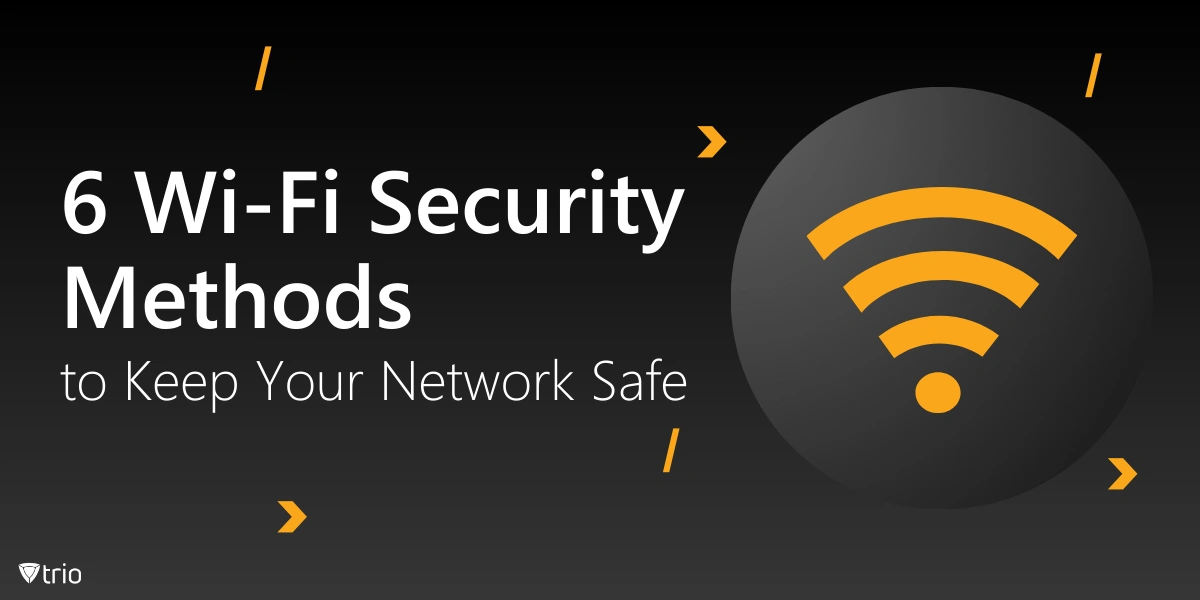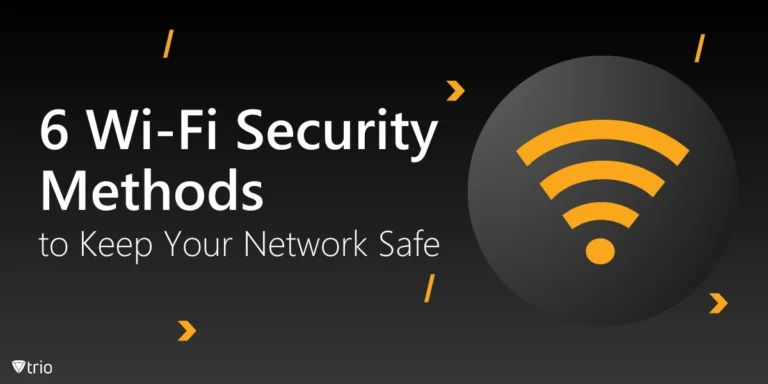Safeguarding wireless networks can feel like taming a digital dragon in a hyperconnected world. Each access point can be a prized gateway for opportunistic attackers, which is why vulnerability management is crucial. This practice involves identifying weak spots and fixing them before digital crooks transform them into grand entrances.
Unsecured Wi-Fi creates a welcome mat for intruders who swipe data or inject harmful software. Determined intruders exploit neglected patches and archaic protocols, turning day-to-day tasks into security nightmares. The outcome can be financially draining, privacy-shattering, and embarrassing for any organization unprepared for these lurking dangers. And that is never fun.
This post explores six Wi-Fi authentication methods designed to protect networks large or small. Each method offers unique perks and hurdles, from simple password setups to advanced enterprise solutions. Prepare to choose wisely and keep data under lock and key, because convenience should never outshine security. Yes, even digital dragons hate locked doors, ironically enough.
What Is Wi-Fi Authentication?
WiFi authentication mode is the backbone of network safety, demanding proof of identity before a device can roam inside. Think of it as a high-tech bouncer checking each visitor’s credentials at the door. Without this checkpoint, opportunists can wander in, rummage around, and vanish with precious information. That’s bad news indeed.
A WiFi authentication problem typically stems from lazy passwords or outdated configurations that let intruders skip the line. Passwords like “123456” or “admin” might be easy to remember, yet criminals find them even easier to guess. Shrugging off updates or ignoring firmware patches can also weaken defenses in spectacular fashion.
Authentication bypass vulnerabilities represent tricky exploits that let malicious actors bypass defenses undetected. Attackers might exploit system flaws or sniff out network traffic for clues, acting like skilled lockpickers in a shadowy hallway. These breaches can lead to data leaks, unauthorized device control, or expanded access well beyond the local scope.
By taking authentication seriously, a network gains the power to sort friend from foe. This vigilant approach fosters trust among legitimate users who rely on stable connectivity for everything from messaging colleagues to streaming cat videos. In essence, robust authentication sets the stage for the protective strategies that follow.
Method 1: WPA2-PSK
Many consider WPA2-PSK the best authentication type for WiFi in casual settings. It relies on a shared password that scrambles data with AES encryption, shielding transmissions from prying eyes. This system replaced older, flimsy protocols like WEP, transforming networks into fortresses that are tougher to crack.
Despite its strengths, WPA2-PSK ties everyone to a singular password. If that code slips into the wrong hands, each device must be reconfigured. This scenario can feel like rounding up cats, especially in offices where staff rotates frequently or contractors pop in and out with personal gadgets.
To shore up weaknesses, choose a complex passphrase and swap it periodically. Never settle for something short or easy-to-remember, since that’s precisely what intruders expect. Mixing WPA2-PSK with network segmentation or a guest network can further isolate sensitive data from casual visitors, creating an extra hurdle for snooping opportunists.

Method 2: WPA3-Personal
WPA3-Personal bursts onto the scene with stronger encryption and sharper tools that hamper intruder attempts. One standout feature involves man-in-the-middle attack prevention, which blocks crafty eavesdroppers from hijacking traffic mid-transit. Another highlight is forward secrecy, meaning past data stays safe even if future keys get compromised.
This protocol ditches the old pre-shared key handshake in favor of Simultaneous Authentication of Equals, which shrinks brute-force possibilities. Upgrading to WPA3 often calls for modern hardware, although certain legacy devices might accept firmware updates. Adopting it requires a keen eye for compatibility, especially with older routers.
Still, WPA3-Personal embodies a next-generation approach that can revolutionize home or office security. Its robust encryption helps keep even simpler passwords safer, minimizing the risk of catastrophic break-ins. With networking trends marching onward, implementing WPA3 ensures a future-ready stance that stands firm against evolving threats.
Method 3: WPA2-Enterprise or WPA3-Enterprise
Among enterprise WiFi authentication methods, WPA2-Enterprise and WPA3-Enterprise stand tall by separating user credentials from the collective password approach. This structure depends on an external server, often RADIUS, that manages individual logins. Each person enjoys unique keys, and an admin can revoke access instantly when someone leaves the organization or misbehaves.
Enterprise mode Wi-Fi authentication embraces advanced encryption—AES for WPA2 and a mightier 192-bit standard for WPA3. This leap stands out in industries handling sensitive data, where compliance regulations demand airtight security. Although WPA2-Enterprise is widespread and stable, WPA3-Enterprise pushes the boundary with cutting-edge protection for environments that crave added reassurance.
Federated authentication further streamlines this model by allowing users to hop across various sites under a single login umbrella. Scalability is its hallmark, fitting any size organization with minimal fuss. While setup involves deeper technical expertise, the payoff is a robust system that wards off prying eyes and meddlesome intruders.
Method 4: RADIUS Authentication
RADIUS stands for Remote Authentication Dial-In User Service, acting as a WiFi authentication server that manages who enters a network. This model centralizes credentials and logs each login attempt, offering an eagle-eye view of activities. When combined with enterprise modes, it delivers tighter oversight and swift removal of unauthorized guests.
The process involves an access point that forwards user details to the RADIUS server. Upon validation, the network door swings open; otherwise, it remains firmly locked. This arrangement reduces the burden of distributing or changing shared passwords while recording thorough audit trails.
For those craving simpler deployments, authentication as a service platforms handle the heavy lifting offsite. Credentials and policies live in the cloud, easing local maintenance and hardware concerns. Regardless of the approach, encrypting communications between devices and servers is vital to block eavesdroppers from snooping on sensitive authentication exchanges.
Method 5: Captive Portals
Captive portals greet newcomers with a splash page that requests registration, acceptance of terms, or authentication. This approach can transform regular visitors into a human firewall because they acknowledge rules before receiving access. Hotels, cafes, and airports often rely on this mechanism to keep pranks and freeloading to a minimum.
Data security posture management thrives in this setup, monitoring the behavior of users once they connect. Certain portals gather emails or payment details, transforming Wi-Fi into a marketing channel. Yet, encryption remains separate, so pairing captive portals with WPA2 or WPA3 ensures nobody sifts through your data while sipping coffee.
Portal design can be whimsical or businesslike, yet clarity matters. Users should grasp expectations—no sneaky charges or hidden disclaimers. When done well, captive portals handle guests courteously while maintaining protective barriers, balancing hospitality with vigilance that keeps troublemakers away and genuine customers satisfied.
Method 6: MAC Address Filtering
MAC Address Filtering checks the hardware fingerprints of devices before granting entry. It’s a low-level approach, often used alongside stronger encryption. As part of cybersecurity metrics, this method signals diligence by blocking unrecognized addresses, though spoofing MAC IDs isn’t too hard for crafty individuals.
Once a device’s address is whitelisted, it can wander freely. But if that address leaks or a rogue element mimics it, the gate swings wide to the wrong crowd. Frequent changes to the device list can also be taxing, especially in bustling offices or public-facing networks.
MAC Filtering works best as a companion measure. Pair it with WPA2 or WPA3 to create layers of protection that discourage casual pirates. By mixing multiple defenses, you push intruders to look elsewhere for simpler opportunities, keeping data locked behind walls that are truly beyond pure theater.

Trio: Orchestrating Devices, Shielding Data
Mobile Device Management (MDM) goes hand-in-hand with these wireless safeguards, especially when phones and tablets keep popping up in workplaces. Such solutions can track usage, enforce password standards, and highlight outdated apps ripe for exploitation. A unified policy ensures every handheld friend abides by the rules, raising overall confidence in daily operations.
Trio steps into this realm by integrating MDM with real-time oversight, detecting suspicious behavior before it snowballs. You can try the free demo to witness how consolidated management cuts confusion and boosts security. The wider the device pool, the stronger the need for a flexible tool that harmonizes with busy networks.
Conclusion: Closing the Loop
Each Wi-Fi authentication method serves a unique function. WPA2-PSK and WPA3-Personal excel in smaller setups, while enterprise variations and RADIUS tighten control in larger environments. Captive portals guide visitors through a controlled gateway, and MAC Address Filtering adds an extra lock for the truly persistent. Together, these strategies strengthen overall security.
See Trio in Action: Get Your Free Trial Now!
Successful protection relies on regular firmware updates, robust passwords, and multiple lines of defense. Nothing remains static in the security world, so monitoring new threats and refining settings is indispensable. It’s far better to tackle issues proactively than scramble after an incident sets alarms blaring and businesses reeling.
From exciting innovations like WPA3-Enterprise to cunning infiltration attempts, wireless landscapes shift quickly. Adopting modern standards delivers stability and forward-looking defense, ensuring that mischief-makers stay at bay. By weaving thoughtful technology choices into daily operations, a network stands strong through changing times, saving time, money, and plenty of headaches.




